|
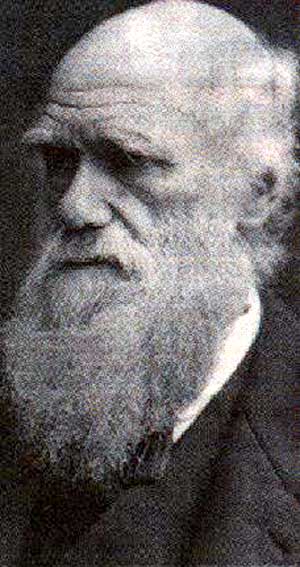
Three weeks ago it was revealed that at least two children have been born with donor mitochondria from a third party (1). This engineering of the child's DNA will most likely be passed on to future generations. Professor Severino Antinori, a gynecologist at Rome University, claims that within two years he will have produced the worlds first cloned human being (2). Although it is hard to see how a clone can improve society by Darwinian evolutionary terms, Antinori has declared that his work will herald a "landmark in human evolution". This direct interference in human evolution reveals that we are witnessing nothing less than the rebirth of eugenics. At a time when science promises such dazzling advances in the practice of medicine, it may be wise to look back to an earlier era when scientists gave hope that a better class of humans was only a generation or so away. The rise and fall of the theory known as eugenics should be considered a cautionary tale. The early eugenicists were usually well-meaning and progressive types. They had embraced Darwins legacy and decided that the process of natural selection would improve if it were guided by human intelligence. They did not know that their work was shaping a rationale for atrocities. In this research project I will look at the eugenics programs of the early 20th century as they were introduced throughout much of Europe and the United States. I will endeavor to explain how this pseudo-science captivated the minds of the masses who embraced its rash implementation with little evidence regarding its effectiveness and how, despite evidence to discredit this science, eugenics continued to be used as a tool for the betterment of nations. I will discuss Charles Darwins and Francis Galtons initial work, giving eugenics a scientific basis for its eventual political use and how it was in fact the use of eugenics as a political tool that led to the widespread genocide and often-forgotten mass sterilizations of the era in question. I will assess the methods of implementation of eugenics programs in different countries and discuss the methods by which it is still in use today. I will use both primary and secondary sources to compare and contrast modern genetics with eugenics and look at why it is wise to look to history when making decisions on important issues such as the makeup of future generations of our species. 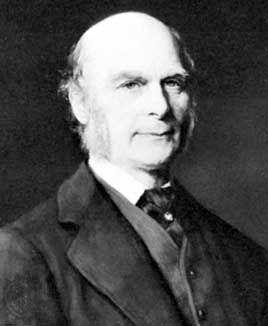
Francis Galton Considered by many to be the father of eugenics, Francis Galton (1822-1911) was the man who in 1883 coined the term eugenics, from a Greek stem meaning "good in birth". Galton defined eugenics thus:
"The science of improvement of the human germ plasm (gene) through better breeding" or "the study of agencies under social control which may improve or impair the racial qualities of future generations."
Negative eugenics: "a systematic effort to minimize the transmission of genes that are considered to be deleterious" -- ex) implementing sterilizing measures to "unfit" people.
Positive eugenics: "a systematic effort to maximize the transmission of genes that are considered to be desirable" -- ex) encouraging the "better" class to have more children.(3)
Francis Galton had a substantial inheritance and a Victorian range of scientific curiosity. He dabbled in a number of fields, including geographical exploration, but his passion was mathematics. He was particularly known for his studies on the efficacy of prayer. Noting that millions of people prayed every Sunday for the health of the monarch as head of the Church of England, and also noting that monarchs tended to die younger than ordinary people, he concluded that the average prayer reduced life expectancy by several seconds.(4) To further alienate himself from the churches of England, Galton claimed that he had expected eugenics to provide a secular substitute for traditional religion, and in the opening decades of the twentieth century, amid the turbulence of Anglo-American urban industrial life, it was said to have accomplished just that. (5)
In Britain and the US, the great age of quantification had begun. An unforeseen consequence of industrialized democracy had seen an increase in the need to measure and survey of all sorts of things. Galton relished this new flood of data, "Whenever you can, count" was his motto, and eventually became absorbed in studying the mathematical distribution of what he called "natural ability" among a sample of British subjects. Galton thought natural ability could be tracked down by reading the biographical sketches of eminent Britons in handbooks and dictionaries. When he did so, he discovered that a disproportionate number of these notable Englishmen were in some way related to one another. He concluded that intelligence and talent were inherited. "Could not," he wondered, "the undesirables be got rid of and the desirables multiplied?" In fairness to Galton, he came to see the encouragement of "good" marriages through positive eugenics as a better way to his eugenic ideal than discouraging or preventing "bad" ones. But the seed of a very dangerous notion had nevertheless been sown. (6)
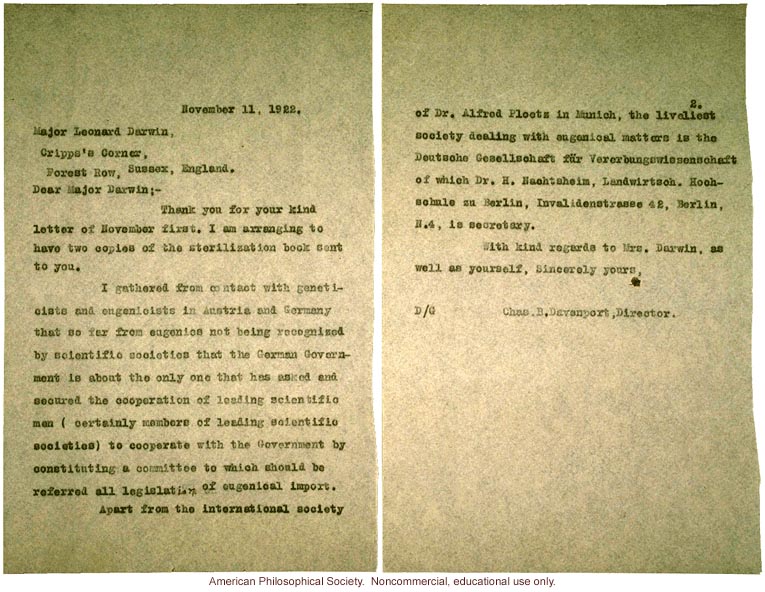
Popular support for eugenics Interest in eugenics grew with the rediscovery and widespread study of an Austrian monk's experiments in breeding peas. Gregor Mendel's discovery of genetically transmitted traits seemed to many the key that would unlock the mysteries of human heredity. (7) Eugenics derived energy from the organizational efforts of its advocates. In 1907, inspired by Galton, a national Eugenics Education Society was founded in Britain. Branches of the society sprang up in Birmingham, Cambridge, Manchester, Southampton, Liverpool, Glasgow, and Sydney, Australia. Local eugenics groups started across the United States, eugenic themes diffused into groups devoted to sex education and sex hygiene, and were evident in the baby-health competitions that spread to some forty states before the war. Various efforts were mounted to organize eugnics on a national basis, along the lines of the British society, they culminated in the formation in 1923 of the "American Eugenics Society", which rapidly spawned twenty eight state committees. (8)
In the US, biologist Charles Davenport (1866-1944) established, with the help of a $10 million endowment from the Carnegie Institution, a center for research in human evolution at Cold Spring Harbor, NY. A strict Mendelian - total belief in inherited characteristics -, Davenport believed so-called single-unit genes determined such traits as alcoholism and feeblemindedness. The way to eradicate such failings in the human stock, he argued, was to prevent their carriers from reproducing. He voiced the hope that "human matings could be placed upon the same high plane as that of horse breeding." He declared that prostitution was not caused by poverty but by an "innate eroticism" and stressed that "similarly unsavory behavior was genetically pre-determined." (9)
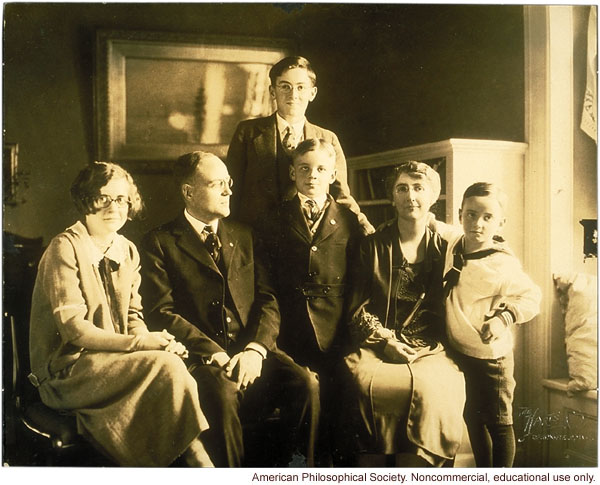
In his book "In the Name of Eugenics", Kelves states that "eugenicists identified human worth with the qualities they presumed themselves to possess - the sort that facilitated passage through schools, universities and professional training." Kevles' insight helps explain the fervor that eugenicists on both sides of the Atlantic displayed during the early years of this century. These were people who felt themselves and the future of their children threatened. In Britain members of the upper middle-class feared they would be swamped and taxed to extinction by the over-breeding of the lower classes. In the US, the white Anglo-Saxons looked with dismay at the flood of non-white immigrants from Southern and Eastern Europe and felt them to be a burden on their country both financially and racially. (10)
The Fitter Families contests had started in 1920, at the Kansas Free Fair. Under the banner of the American Eugenics Society and were soon being featured together with eugenic exhibits at seven to ten state fairs yearly.(11) Local publications gave front-page attention to the competitions and their winners. At the state fairs, the Fitter Families competitions were held in the "human stock" sections and any healthy family could enter. Contestants had only to provide an examiner with the family's eugenic history. All family members had to submit to a medical examination - including a Wassermann test and a psychiatric assessment - and take an intelligence test. At the 1924 Kansas Free Fair, winning families in three categories, small, average, and large, were awarded a Governor's Fitter Family Trophy. (12)
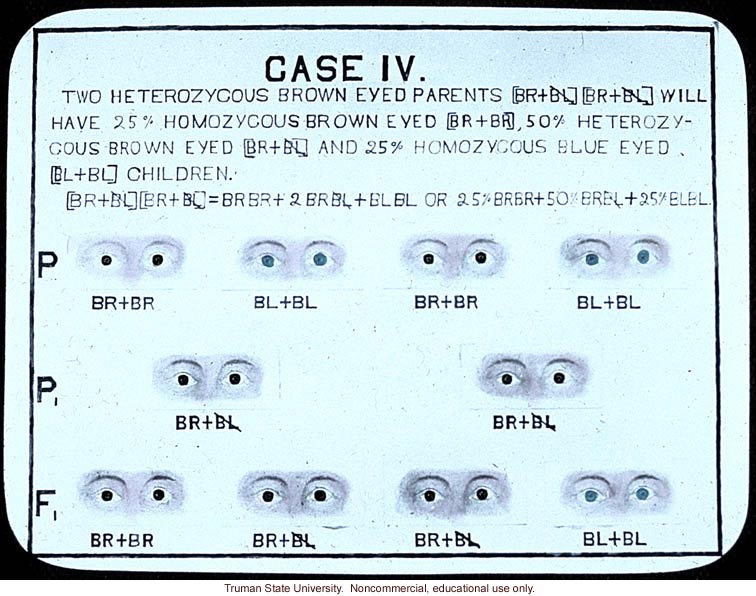
Much of this public fervor looks comically ill-informed in hindsight. In the US and Britain, fairs and exhibitions regularly featured exhibits illustrating Mendelian laws of inheritance, often in the form of black-and-white guinea pigs stuffed and mounted to demonstrate the inheritability of fur color. Kevles quotes from a chart accompanying such a display: "Unfit human traits such as feeblemindedness, epilepsy, criminality, insanity, alcoholism, pauperism and many others run in families and are inherited in exactly the same way as color in guinea pigs." (13) Less amusing is the number of intellectuals, businessmen and political leaders who gave eugenics their support. The list begins with Darwin, who in "The Descent of Man", praised his cousin Galton and decreed that genius "tends to be inherited." In Europe, of the Protestant countries only the UK and Holland resisted eugenics on the grounds of civil liberties. Ironically it is now Britain that leads the way, swabbing every accused criminal for a DNA sample and storing the sample indefinately, in spite of aquittal. (14) Winston Churchill, who admired his own illustrious lineage and wanted the "curse of madness to die", was most disappointed. In contrast all of the Catholic countries throughout the rest of Europe rejected eugenic laws without hesitation. As the Catholic apologist G.K. Chesterton said "Eugenicists have discovered how to combine hardening of the heart with softening of the head".(15) In "Intellectuals and the Masses", John Carey chronicled some of the horrific statements of the most unlikely social Darwinists of the time. H.G. Wells said in 1901, "The swarms of black, brown, dirty-white and yellow people have to go...it is their portion to die out". D.H. Lawrence said in 1921, "Three cheers for the inventors of poison gas". George Bernard Shaw said in 1933, "If we desire a certain type of civilization we must exterminate the sort of people who do not fit in". In 1939 W.B. Yeats explanation of the evolutionary mechanism went as follows: "Since improvements in agriculture and industry are threatening to remove the last check on the multiplication of the uneducable masses the better stocks have not been replacing their numbers, while the stupider and less healthy have been". As H.G. Wells concluded in 1905, "The extravagant swarms of new births was the essential disaster of the 19th century". Perhaps not surprisingly, other vocal champions of eugenics included; Alexander Graham Bell, John Maynard Keynes, Theodore Roosevelt and Calvin Coolidge, who declared during his vice presidency that "Nordics deteriorate when mixed with other races." (16) 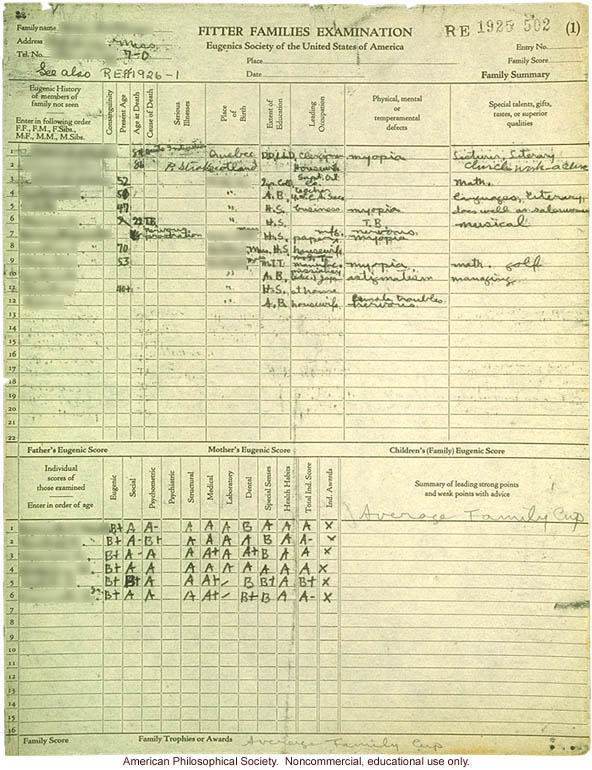
Eugenics could never alleviate the concerns of feeblemindedness. In fact, as the eugenicists knew as early as 1917, with the publication of a genetic theory known as the Hardy-Weinberg Principle, sterilizing the so-called unfit could never stop the spread of the recessive genes they believed caused unfitness. But this was a truth they kept to themselves. Eugenics was a good source of grants and of prestige which had put science and scientists at the heart of government, which was where they wanted to stay. As Professor Jennings of Johns Hopkins University boasted in his 1930 "Biological Basis of Human Nature", "Gone are the days when the biologist was an abused creature, his pockets bulging with snakes and newts". (17) Implementation of eugenics Prior to Galton, friendlier states in The US began to fund homes for the mentally deficient. From 1848 to 1860, Massachusetts, New York, Pennsylvania, Connecticut, Ohio, and Kentucky constructed homes. They flourished and were quickly filled to capacity. Dr. Isaac Kerlin of Pennsylvania noted an "idiotic population" of 76,895 in the 1880 census, yet only 2,429 were institutionalized. "Clearly, there exists an abundance of morons [at large]" he argued. Kerlin ran an institution himself, and of the 295 children who applied for a place there, less than half had been listed in the census. He claimed this indicated a large undercounting of the retarded, and, equally troubling, a general population increase of 30 percent in ten years was supplanted by a 200 percent increase in "apparent" idiocy. Concern about this booming population became manifest, and private moneys flowed in. Philanthropist Amy Shaw Lowell constructed a home for "weak-minded females" who were "life-long burdens upon the tax-payers". The purpose of this particular home was not rehabilitation or treatment, it was quarantine. Several of the women had already borne illegitimate children, and protection was conferred upon them, as they were "so simple as to be easily led away by designing men." By the late 1880s the herding of fertile, deficient women into asylums was openly discussed and considered to be a legitimate, workable solution to a public welfare disaster. One expert urged "we owe it not only to the adult imbecile herself, but to humanity and the world at large to guard in every possible way against the abuse and increase of this class." Similar comments suggest that there was unwarranted optimism that by segregating a few thousand simple-minded women, society could stem a significant fraction of the births of defective persons. (18)
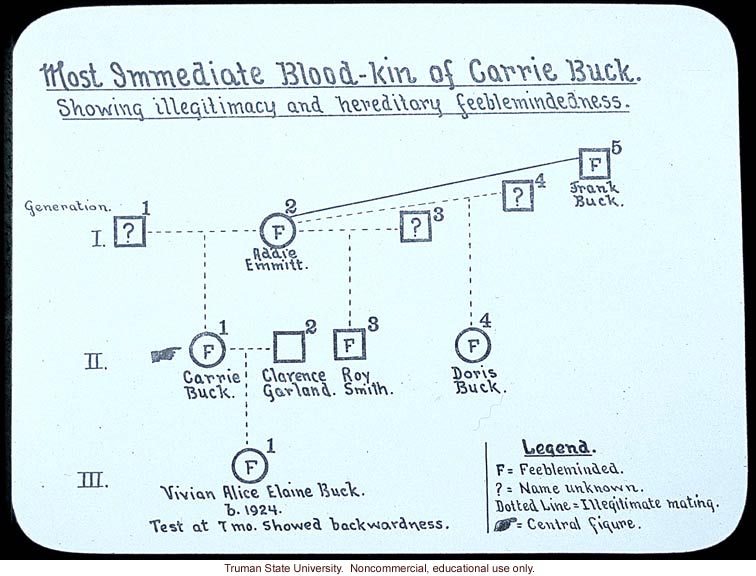
Looking at the evidence presented above, it becomes clear that eugenics was not just a collection of theories and that even before Galton eugenics was being practiced in organized groups, on a large scale. Soon after the enactment of the laws separating fertile and mentally disabled women from the greater population, many US states began enacting laws requiring the sterilization of those held in prison custody who were deemed to suffer from hereditary defects. By 1911 six states of the Union had already legislated the compulsory sterilization of the mentally unfit and by 1935 no fewer than 27 states had passed such laws. By 1935 California alone had sterilized 9,931 mental defectives. By 1940 over 100,000 US citizens had been sterilized compulsorily. One notable example of the negative result that this law had on the population occurred in 1927 when the US Supreme Court heard the appeal of the State of Virginia's decision to sterilize Carrie Buck, an institutionalized 17-year-old whom the state had decreed a "moral imbecile". The daughter of a "feebleminded" mother and the mother herself of a daughter who was found to be, at age seven months, of subnormal intelligence. The court, by an 8-to-1 vote, rejected Buck's appeal. In his majority opinion, Oliver Wendell Holmes wrote, "The principle that sustains compulsory vaccination is broad enough to cover cutting her Fallopian tubes," and concluded, "Three generations of imbeciles are enough.(19) 
German eugenics programs Nowhere, of course, were eugenic theories more enthusiastically applied to state doctrine than in Nazi Germany. In Germany, interest in eugenics flourished after the turn of the century when Dr. Alfred Ploetz founded the Archives of Race-Theory and Social Biology in 1904 and, the German Society of Racial Hygiene in 1905. The German term "Rassenhygiene" or race hygiene encompassed more than the word "eugenics", it included all attempts to improve hereditary qualities as well as measures directed at population increase. By the 1920s, various German textbooks incorporated ideas of heredity and racial hygiene, and German professors were participating in the international eugenics movement. The Kaiser Wilhelm Institute of Anthropology, Human Heredity, and Eugenics was founded in 1927. By 1933 a sterilization law, the "Law for the Prevention of Congenitally of Progeny", which originally was entitled "Eugenics in the Service of Public Welfare", indicated compulsory sterilization "for the prevention of progeny with hereditary defects" in cases of "congenital mental defects, schizophrenia, manic-depressive psychosis, hereditary epilepsy and severe alcoholism." Government officials countered potential objections about the cruelty of this measure by asserting that personal sacrifices would serve the common good. "We go beyond neighborly love, we extend it to future generations". Mill would have been proud. In light of these politically supported ideologies it is little wonder that the only professional group in Germany before 1933 that could boast that more than half its members were Nazis was the profession of academic biologists. (20)

In Hitler The Social Darwinists had found their champion. Germany's criminal abuse of eugenics was never better illustrated than by Professor Otmar Freiherr von Verschuer, who was the director of the Kaiser Wilhelm Institute of Anthropology, Human Heredity and Eugenics, founded in 1927 with money in part provided by the Rockefeller and ironically the Jewish-run Loeb foundation in America. Verschuer was a fanatical nationalist, and he advocated sterilization of the mentally unfit well before Hitler came to power. His star pupil was Dr. Mengele, the "Angel of Death" of Auschwitz, and it was to Verschuer that Mengele sent his specimens. As a young researcher, Dr. Josef Mengele had done valid work showing how diseases such as cleft lip were inherited, and he had also published studies on the racial inheritances of jaw shape, comparing Egyptian mummies with Melanesian and European specimens. But with the rise of the Nazis he and Verschuer, anxious for funding, bent their considerable intellects to testifying before the Racial Hygiene Courts on who was Jewish. Mengele eventually joined the SS, pursuing his studies on twins in Auschwitz. He was interested in the inheritance of eye colour, and he would kill children with unusually coloured eyes so that he could extract them and send them to Verschuer in Berlin to dissect. (21) After the fall of the Third Reich, the overwhelming extent of the atrocities committed by the Nazis became apparent. The murder of six million Jews along with countless Gypsies, homosexuals and other groups severely embarrassed the eugenicists worldwide. What had been done in the name of their coveted science was inexcusable and inextricably linked to their pursuit of "perfection". Consequently the American Eugenics Society changed its goals from:
"[Sterilization could] be applied to an ever widening circle of social discards, beginning always with the criminal, the diseased and the insane, and extending gradually to types which may be called weaklings rather than defectives, and perhaps ultimately to worthless race types." (1926)
To:
"The very word eugenics is in disrepute in some quarters ... We must ask ourselves, what have we done wrong?I think we have failed to take into account a trait which is almost universal and is very deep in human nature. People simply are not willing to accept the idea that the genetic base on which their character was formed is inferior and should not be repeated in the next generation. We have asked whole groups of people to accept this idea and we have asked individuals to accept it. They have constantly refused and we have all but killed the eugenic movement. They won't accept the idea that they are in general second rate. We must rely on other motivation. It is surely possible to build a system of voluntary unconscious selection. But the reasons must be generally acceptable reasons. Let's stop telling anyone that they have a generally inferior genetic quality, for they will never agree. Let's base our proposals on the desirability of having children born in homes where they will get affectionate and responsible care, and perhaps our proposals will be accepted". (1956) (22)

Modern eugenics Since World War II, interest in the type of eugenics popular in the early half of the century has changed. Utilizing gene therapy, genetic testing and screening, and genetic counseling, scientists and doctors use knowledge of inherited diseases or other genetic problems to help those persons who can be assisted. Despite the success of such interventions, they raise questions about the morality of changing human genes, the wisdom of acting when no cure is available, or the legality of breaching a patient's genetic confidentiality. Some geneticists and health professionals think that to withhold any genetic intervention would be wrong since people "need and deserve to have whatever information that may be available concerning health risks, genetic disorders, and modes of treatment" even if problems may be inherent in genetic screening, counseling, or therapy.(23) Concepts central to the "old eugenics" have not completely disappeared. A recent Chinese law, the "Law on Maternal and Infant Health Care", which took effect on June 1, 1995, requires premarital checkups to determine whether either partner carries "genetic diseases of a serious nature, infectious diseases such as AIDS, gonorrhea, syphilis, and leprosy, or any "relevant mental disease". The law stipulates that marriages will be permitted only after the couple has been sterilized. (24) When commenting on a draft of the legislation in 1993, a health minister cited statistics to show that China "now has more than ten million disabled persons who could have been prevented through better controls".
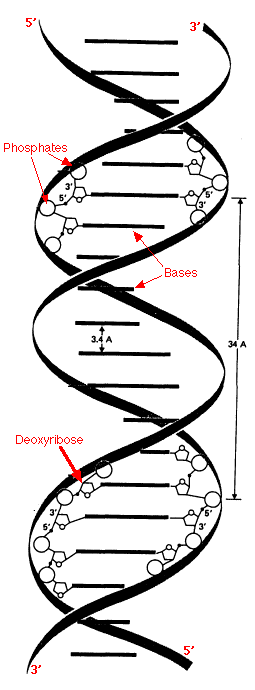
Conclusion
Eugenics has never recovered from the news of what had been carried out under its banner in Hitler's Germany, nor should it. Many people had debunked eugenic theories well before the horrors of the Holocaust occurred and became widely known. The flaws in eugenics, so obvious to us now, did however result in valuable research into human genetics. It is common for historians to claim that Hiroshima witnessed the death of innocence for science but we see in the case of eugenics that science lost its innocence when it sold out to the politicians who used it as a tool for their political ends. For as long as the eugenicists were only academics they could do little harm, but the moment the politicians adopted their ideas, and employed the coercive power of the state to impose those ideas, did people begin to suffer. Todays eugenics is potentially safe. Like Professor Antinoris in Rome, it is being conducted by individuals on an individual basis. It is not without associated risks but potentially, if applied with discretion, these technologies offer a wealth of opportunities to people who would otherwise suffer. The modern eugenics is positive eugenics insofar as it will be used to screen for mortal defects and for improoving the lives of the living. If we are to avoid the eugenics horrors of the past, we will have to foster a state that is independent of science, and we will have to foster a science that cannot shelter its abuses behind the power of the state. We must learn from the mistakes made in the field of eugenics and be mindful of the political power such sciences can wield but we must not reject a science that can quite possibly change the world for the better so dramatically.
Linked Bibliography - had trouble here. I reached a dead end when trying to link the footnotes and general text to the online sources. Consequently, I had to resort to putting them on a Geocities web-page that opens in a new screen. If you encounter any problems click the "Contact Us" button at the top of the page where you will find my contact details, Toby. This document contains 3996 words |



